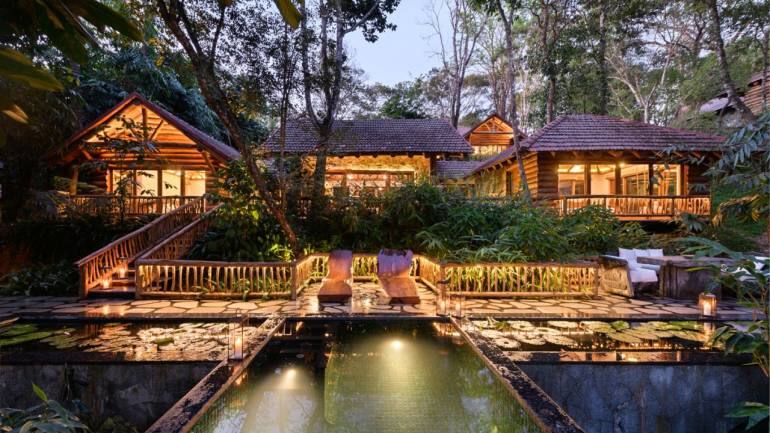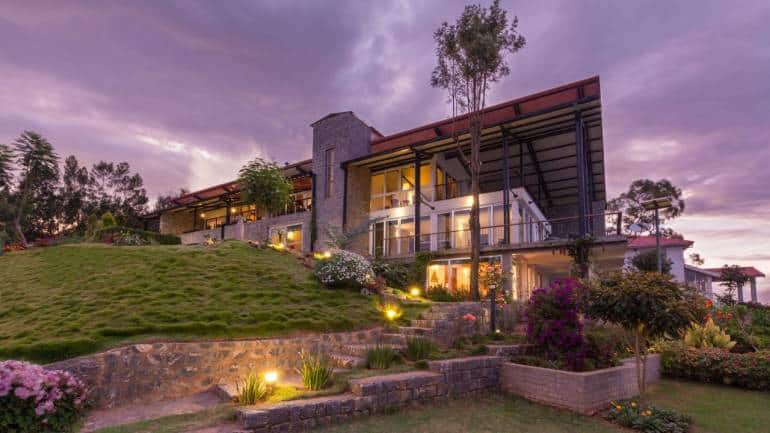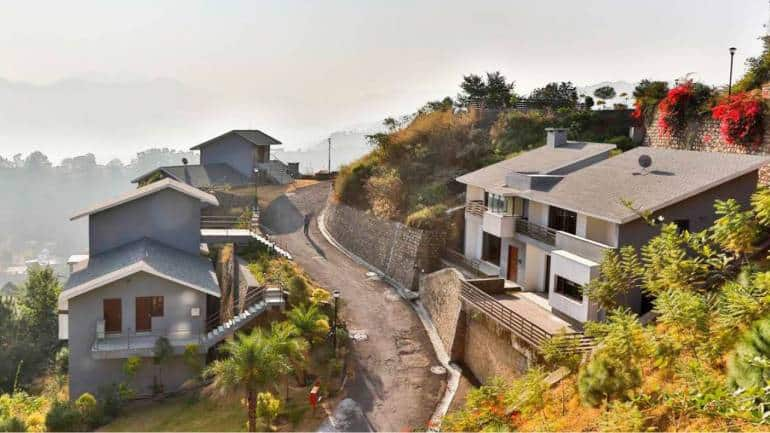



Every morning Sarath Champati, a naturalist, who works with Evolve Back Luxury Resorts, wakes up to birds chirping at his villa surrounded by a lush green forest. Champati stays at Stone Lodges, a cluster of 15 luxury private residences spread across a 13-acre forested hillside in Wayanad.
"We go back to Bengaluru for 10 days in a month and then return here. The noise pollution and poor water quality of Whitefield in Bengaluru gradually drove us here into the lap of nature. Remotely working from here has been a great experience," he added.
Three waves of Covid-19 have reshaped Indian society and led to a ‘sustainability’ mindset. Today, more and more people are trying to adopt a sustainable lifestyle.
The real estate sector has found ways of transforming pockets of metro cities through afforestation and sustainable housing projects.
In 2021, Mumbai incorporated the Miyawaki technique that attempts to reforest urban lands rapidly, especially when vacant land in city centres has started disappearing. Several ongoing projects like Godrej Properties' Urban Park, have adopted this technique to replicate natural landscapes in the middle of densely-packed developments.
However, architects say, in the long run this may weigh on cities heavily if not implemented holistically.
 Earthitect-developed luxury residential project in Wayanad.
Earthitect-developed luxury residential project in Wayanad.
Back to nature
George Ramapuram, Principal Architect of Earthitects, the firm that developed Stone Lodges, believe in "reverse urbanisation". "The outcome of it is an ecologically-conscious design that works closely with the environment with an uncompromising need for the perfectly-balanced relationship between man, the built space and the natural environment."
"Do you see yourself living in cities your entire life? And especially after Covid and with remote working, we got the needed push to finally venture out," he said.
Ramapuram said with land in cities disappearing at a rapid pace, small pockets of development amid nature will increase in the long run. Having said that, developers or architects should have an understanding of how the local ecology works and continue to maintain the ecological balance of the area, he said.
 Stepped house designed by Studio Lotus in Coonoor. Photo by Ravi Asrani.
Stepped house designed by Studio Lotus in Coonoor. Photo by Ravi Asrani.
Bringing back sustainable housing to urban cities
With the growing demand for sustainable designs, several architects, and developers, have already started designing green housing projects in the middle of metro cities.
Techniques such as Miyawaki afforestation are being widely used to bring back green spaces, and vertical gardens are being adopted due to a land crunch almost everywhere.
Nilesh Dongre, Vertical Head at ECPL, who is also working with Urban Park, in Mumbai, said, "In the Miyawaki technique we can adopt dense forestation in a limited amount of area, especially with native species. In an urban set-up, governments have set up norms to keep open areas in any project. Today, several developers have used those for sustainable designs."
For example, depending on the type of species, Miyawaki afforestation can grow urban forests in two or three years.
Dongre said today cities are witnessing massive developments, and the Miyawaki technique may not offset the carbon footprints generated, but is definitely the way ahead. Dongre said the Miyawaki technique has been tried in several cities like Bengaluru and reports have remained largely successful in creating more green spaces.
"Not just the homebuyers, today, most of the companies, be it in commercial or residential segments, are constantly asking for more sustainable designs," he added.
Anup Mathew, Vice President & Business Head of Godrej Construction, said, "Adoption of sustainability principles in the development of our built environment is not a choice anymore but a necessity. It will require us to plan and evaluate the ecological footprint of our decisions which involves the utilisation of energy, water, other natural resources, carbon emissions, etc."
There is no denying the fact that the sustainable development principles will also need to be effectively adhered to by the real estate sector, he added.
However, affordability of such projects is yet to pick up
To date, housing projects sprawling amid forests, and mountains in India, fall in the luxury segment. Architects say land away from cities tends to be cheaper. However, development in these areas is less compared to large projects in urban cities, which automatically hikes the price factor.
"Today, more people from the younger generations are been drawn towards a green lifestyle. So, affordability will pick up in future as demand picks up," Ramapuram said. “Over the next decade, we can surely see more developers and architects adopting this method,” he added.
Dongre said green rating (platinum, gold, etc.) affects the prices of apartments by about 10 percent.
"For example, we can design buildings that will never require air conditioning systems. Also, primitive Indian design techniques can be used to offset several costs we see today," he added.
Architects say that in affordable projects several sustainable techniques like avoiding certain types of glasses, using shading techniques, etc. can be used to cut down costs significantly.
 A luxury residential mountain villa development in Kasauli designed by Morphogenesis.
A luxury residential mountain villa development in Kasauli designed by Morphogenesis.
Sustainability in Indian real estate in the long run
Ankur Choksi, Principal at Studio Lotus, which provides design solutions in the domains of architecture, and spatial design, said the biggest challenge today is to find solutions to cities getting concentrated on a small landmark.
"How do we ensure that the development is spread around with mixed-use of land? The stress on certain parts of cities is causing troubles by way of disrupting the ecological balance," he added.
Choksi said one major key lies in expanding shared spaces ― in ways people can share their private development with the city. "That can curb the impact of development and help in spreading the population stress over large areas. However, for projects in the middle of nature, though we have de-stressed the land, the important factor to consider here is the manner of construction or the waste management," he added.
Architects in such cases, the methods of construction, and the raw materials used should be critically monitored to avoid disrupting the local ecology that will ultimately lead to encroachment of the land.
Manit Rastogi, Founding Partner of Morphogenesis, an architectural design firm, said most projects that are coming up across forests and mountains are mostly being used as second homes.
"If we look back at history, this is not a new concept, but has picked up only after the pandemic. At the end of the day, if the housing is not built as a complete net-zero project, then we will see disastrous results in future. And, we also need to understand from the perspective of real estate, these projects are good businesses," he added.
Rastogi added that expanding cities have already led to several menaces like monkeys in Mumbai and prowling leopards in Bengaluru's outskirts. "The idea of sustainability is the least possible intervention and more conservation of energy," he added.
For cities, architects say there is a certain ratio that developers need to maintain in terms of population growth and planting trees. "Or we will continue to see problems like flooding in Bengaluru or pollution in Noida. We need to de-stress not just the land inside the project area, but also every land parcel available," he added.
However, with the current technologies, achieving true net-zero is an unbelievable target owing to the fact the density of population in cities is high. "Every land has a carrying capacity, and we have already stressed it. Today, every building needs to have platinum certification, and strict energy conservation designs if we want to achieve true net-zero," Rastogi added.
“It will be some more years before the real estate sector inches close to net-zero development,” Choksi added.
Discover the latest Business News, Sensex, and Nifty updates. Obtain Personal Finance insights, tax queries, and expert opinions on Moneycontrol or download the Moneycontrol App to stay updated!